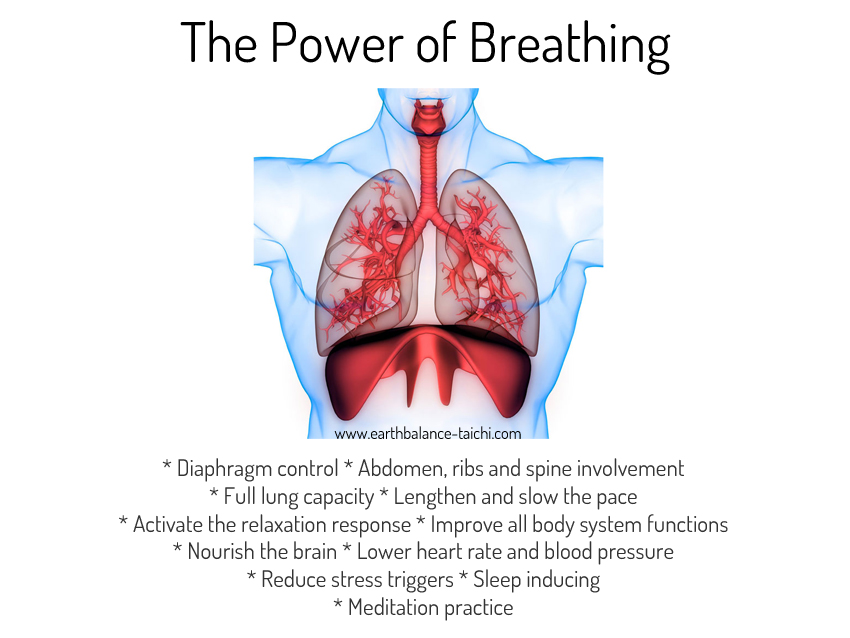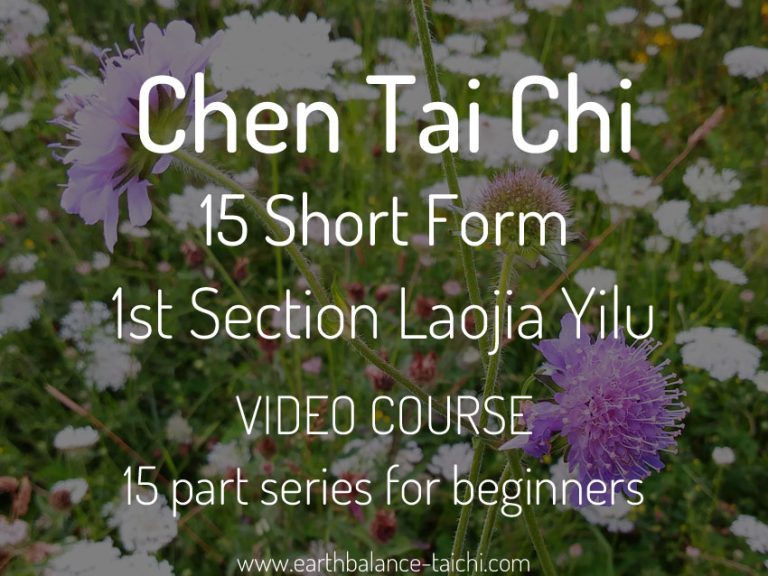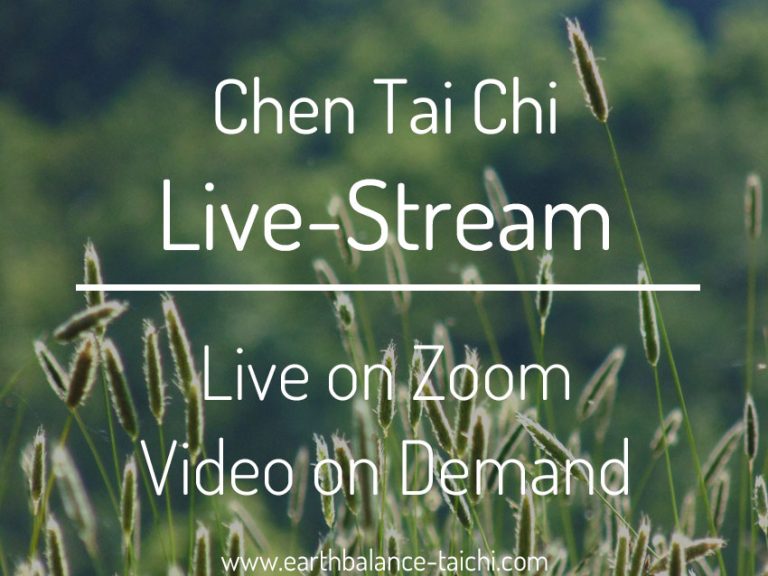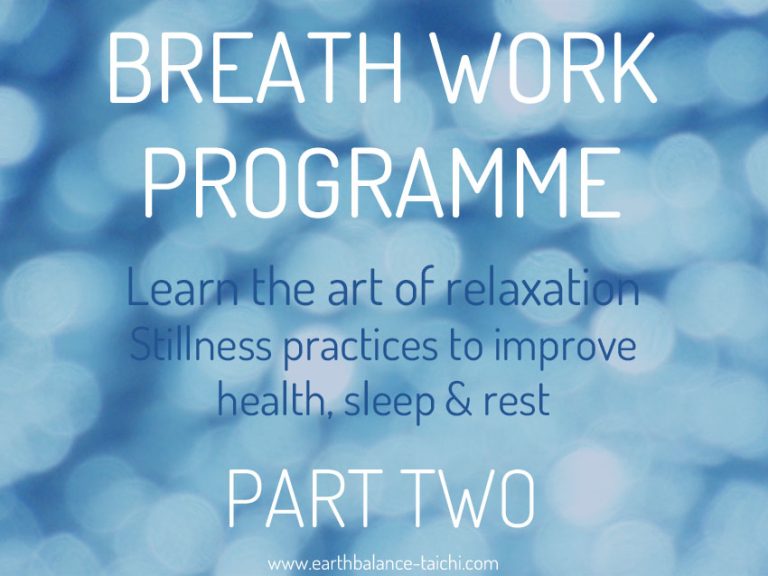Parasympathetic System and Tai Chi

Parasympathetic System and Tai Chi
Learn how to activate the relaxation response and the vagus nerve with deep breathing, slow connected whole body movements and applied relaxation. First let's look at the mechanics of the sympathetic and parasympathetic nervous system. Together they are known as the autonomic nervous system (ANS).
Stress = activation of the sympathetic nervous system (SNS)
Also called the autonomic stress response, the fight, flight or freeze state. This is the bodily state where tissue is being broken down, energy is used and the body systems are working. An extreme of this state is known as the 'fight or flight' response, when our bodies prepare to be violent, attack or run away. It is a high alert state, ready for quick thinking to respond to an immediate threat. It is designed to be a temporary state.
Stress response body reaction:
- increases heart rate
- raises blood pressure
- releases adrenalin
- releases cortisol hormones
- shallow breathing into the upper chest
- faster breathing rate
- opens pupils of the eyes
- constricts saliva flow
- opens lung vessels to work harder
- slows digestion
- uses emergency energy reserves
- reduces immune system function
- reduces repair systems function
- increases mental and physical symptoms of stress
- increases feelings of anxiety and depression
- decreases emotion regulation function
When the stress state dominates the relaxation state this creates imbalance in the body. This imbalance can cause the PH within the body to become more acidic. Disease and illness linked to high acid PH levels in the body e.g. auto immune diseases, inflammation, hypertension, cancer.
Relaxation = activation of the parasympathetic nervous system (PSNS)
Also called the autonomic relaxation response, the rest and digest state. This is the bodily state where tissue is regenerated and the body systems are at rest. An extreme of this state is known as deep relaxation.
Relaxation response body reaction:
- decreases heart rate
- lowers blood pressure
- fosters diaphragmatic breathing
- slower breathing rate
- reduces pupil dilation in the eyes
- restores saliva flow
- constricts lung vessels to work more efficiently
- increase digestion function
- restores immune system function
- restores repair systems function
- reduces mental and physical symptoms of stress
- reduces feelings of anxiety and depression
- increases emotion regulation function
Slow and deep breathing along with an intention to relax and release helps to activate the initial stages of the parasympathetic response. Energy is then used more efficiently by the body. This state is much less exhausting than the stress response.
The Vagus Nerve
The PSNS runs along four cranial nerves that link to the brain. Three of these are sensory nerves relating to the mouth, eyes and nose. The vagus nerve is the fourth cranial nerve, it is called cranial X or CN X. It is both a sensory and a motor function nerve. It is also the longest cranial nerve and is responsible for about three quarters of the PSNS. It runs from the mouth down through the neck, chest and into the abdomen, connecting to the internal organs: larynx, trachea, bronchi, heart, lungs, liver, gallbladder, stomach, pancreas, small intestine, large intestine and kidneys. This means the vagus nerve has the most influence on the PSNS as it is responsible for a steady, calm and restful state.
Function:
- regulates breathing
- regulates heart rate
- lowers heart rate
- lowers blood pressure
- settles the mind and body after stress
- regulates the stress response
- stimulates digestion
- stimulates the immune system
- responsible for the cardiovascular system
- responsible for the reflex action e.g. sneezing
Consider the vagus nerve like a guardian of your internal state. It observes organ function, and sends information from the heart, liver, lung and stomach organs to the brain, as well as sending information from the brain to the organs. How to stimulate the vagus nerve:
-
Slow, deep, lengthening diaphragmatic breathing.
- Mind body movement practices e.g. Tai Chi, Qigong, yoga.
- Mindfulness, meditation and prayer.
- Making audible sounds that vibrate the vocal cords around the vagus nerve connection in the mouth and throat e.g. yoga 'om', chanting, humming, throat singing, gargling.
- Laughing and smiling. Smiling in Traditional Chinese Medicine is known as the gate way to relaxation.
- Positive thinking whether happening in real time, or projecting positive thoughts and gratitude.
- Immersion in cold water, to stimulate the reflex response e.g. face or body.
View a video about the mind body connection with the nervous system responses and the vagus nerve here. How the vagus nerve can help reduce inflammation in the body.
Tai Chi and the Parasympathetic Nervous System
Tai Chi and Qi Gong are mind body practices that combine slow deep breathing, dynamic spiralling, stretching movements, applied relaxation of the muscles, awareness and focused intention. These exercises help support the parasympathetic nervous system and stimulate the vagus nerve. Except when you add in the mind body connection and breath work, this gives you an all round boost to the relaxation response. Slow body movements mimics the 'rest and digest' body language, you can trick the brain into the relaxation response by moving like you are under water matched with slow breathing.
Tai Chi and the vagus nerve were studied in 2008, concluding that Tai Chi increases heart rate variability which increased vagal modulation. Tai Chi also helps to stimulate the vagus nerve to:
- Reduce acidity in the internal body as the demand for oxygen in the blood is increased through movement, which activates the alkaline response, aiding tissue regeneration and internal healing.
- Reduce inflammation
- Lower heart rate and blood pressure
- Increase the release of anti-stress hormones
- Keep you calm when stressed or under pressure
- Balance moods and builds mental resilience
20 minutes of Tai Chi and Qigong practice is an effective way to activate the relaxation response in the body. You will feel calmer, more centred, alert, relaxed and at ease. Help return your body to a neutral state for improved health, happiness and longevity.
Breathing and the Parasympathetic Nervous System
At the core of all Tai Chi, Qigong and Taoist meditation practice, is diaphragmatic breathing. Taking a full breath is essential to both physiological health and mental wellbeing. Oxygen supply to the whole body is vital for life long health, health preservation and slowing the aging process. The majority of people are shallow breathing, which means they may be living chronically in the stress response. Over time this takes a toll on the mind and body. One of the easiest ways to improve your quality of health is by adding breath work techniques to your daily routine.
The inhale is the active / energetic part of the breath, the exhale is the inactive / relaxation part of the breath. The exhale is what stimulates the vagus nerve and is the key to the stress response. By controlling and regulating your breath to become deeper, fuller and slower, this action sends signals to the brain that you are in a state of calm, triggering the relaxation response. By stimulating the vagus nerve frequently through good breathing techniques you keep it functioning well. Focusing on your breath is also a healthy distraction that takes you away from focusing on the stress trigger. Read more about the Taoist philosophy on healthy distractions and over-thinking.
In Taoist breath work, traditionally the tongue is placed on the roof of the palate, either with the tip of the tongue touching the back of the top teeth, or touching a location on the palate. This is called the magpie bridge or bridge over the heavenly pool and the tongue position links the Ren and Du Mai meridian vessels. New studies suggest that this engagement of the tongue muscles deep at the back of the throat whilst diaphragmatic breathing is also a way to stimulate the vagus nerve.
Medical Research
- "Meditative movements such as Tai-Chi and Qigong, among other methods such as visualization, progressive muscle relaxation, energy healing, acupuncture, massage, and breathing techniques, are effective ways to elicit the relaxation response to counteract the stress response." "People who meditate regularly enjoy lower stress levels, increased well-being, and even lowered blood pressure and resting heart rate." "Preliminary evidence suggests that Qigong and Tai-Chi may be potentially beneficial for management of depressive and anxiety symptoms in healthy adults and patients with chronic illnesses."
- Albert Yeung, M.D., Sc.D., Jessie S. M. Chan, Ph.D, M.P.H., Joey C. Cheung, B.S., Liye Zou, Ph.D. (2018). Qigong and Tai-Chi for Mood Regulation. DOI: https://doi.org/10.1176/appi.focus.20170042
- "The purpose of this study was to examine whether the practice of Tai Chi Chih (TCC), a movement-based relaxation practice, would acutely promote decreases of sympathetic activity in elderly persons." "Results showed that TCC performance significantly decreased sympathetic activity." "This study is the first to our knowledge to assess the acute effects of TCC practice on sympathetic activity in older adults. TCC performance led to acute decreases in sympathetic activity, which could not be explained by physical activity alone."
- Sarosh J Motivala 1, John Sollers, Julian Thayer, Michael R Irwin (2006). Tai Chi Chih acutely decreases sympathetic nervous system activity in older adults. DOI: https://doi.org/10.1093/gerona/61.11.1177
- "Our study demonstrated that Tai Chi synergy T1 exercise lowered sympathetic tone but paradoxically increased parasympathetic nerve activity." "Tai Chi exercise can increase parasympathetic but decrease sympathetic modulation, therefore lowering arterial blood pressure." "Tai Chi exercise also demonstrated the effect of shifting the balance of the autonomic nervous system from sympathetic tone to parasympathetic tone." "Tai Chi exercise practitioners retained better autonomic balance and demonstrated higher modulation of parasympathetic activity."
- Hsu-Chih Tai,1Yi-Sheng Chou,2,3I-Shiang Tzeng,4Cheng-Yu Wei,1,5Chun-Hsien Su,1Wen-Chen Liu,6and Woon-Man Kung1,7,8 (2018). Effect of Tai Chi Synergy T1 Exercise on Autonomic Function, Metabolism, and Physical Fitness of Healthy Individuals. URL: https://www.hindawi.com/journals/ecam/2018/6351938/
- "The change in heart rate and HRV between resting and post-TC suggested that TC exercise could enhance vagal modulation. The potential beneficial effect of long-term regular TC exercise in patients with CAD merits further investigation."
- Chang RY, Koo M, Yu ZR, Kan CB, Chu IT, Hsu CT, Chen CY. The effect of t'ai chi exercise on autonomic nervous function of patients with coronary artery disease. J Altern Complement Med. 2008 Nov;14(9):1107-13. https://pubmed.ncbi.nlm.nih.gov/18991518/
Please speak with your doctor prior to starting a new exercise programme. This article is for information purposes only and must not be taken as medical advice.
















